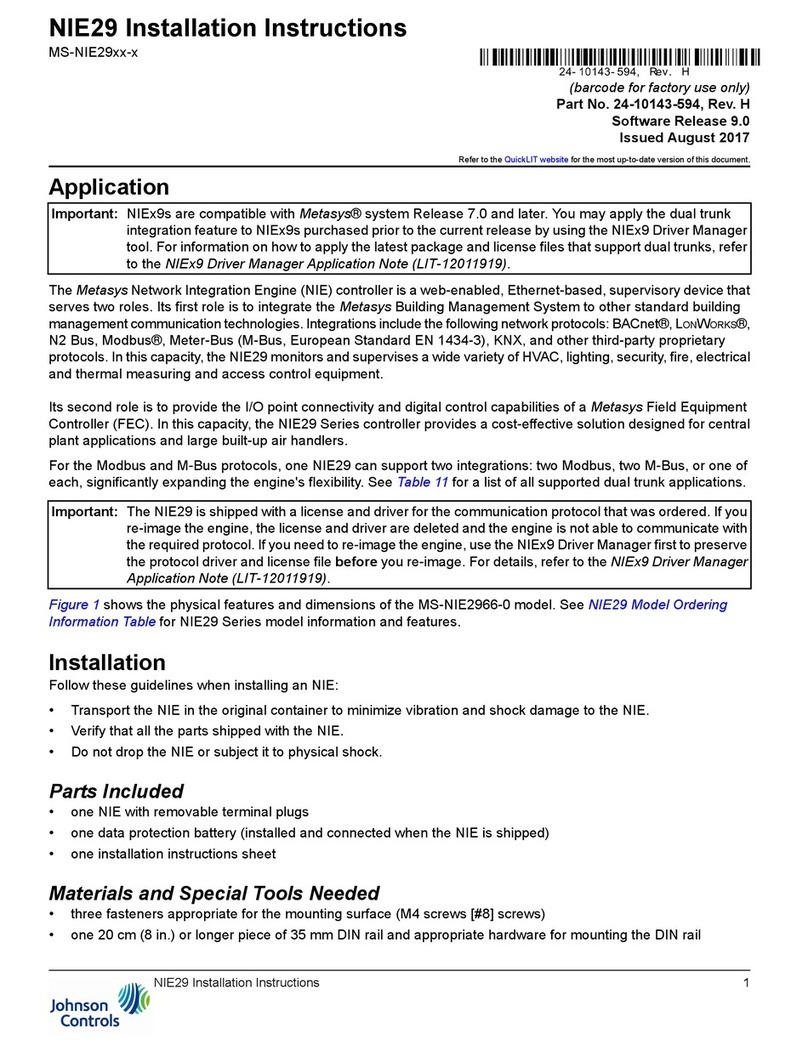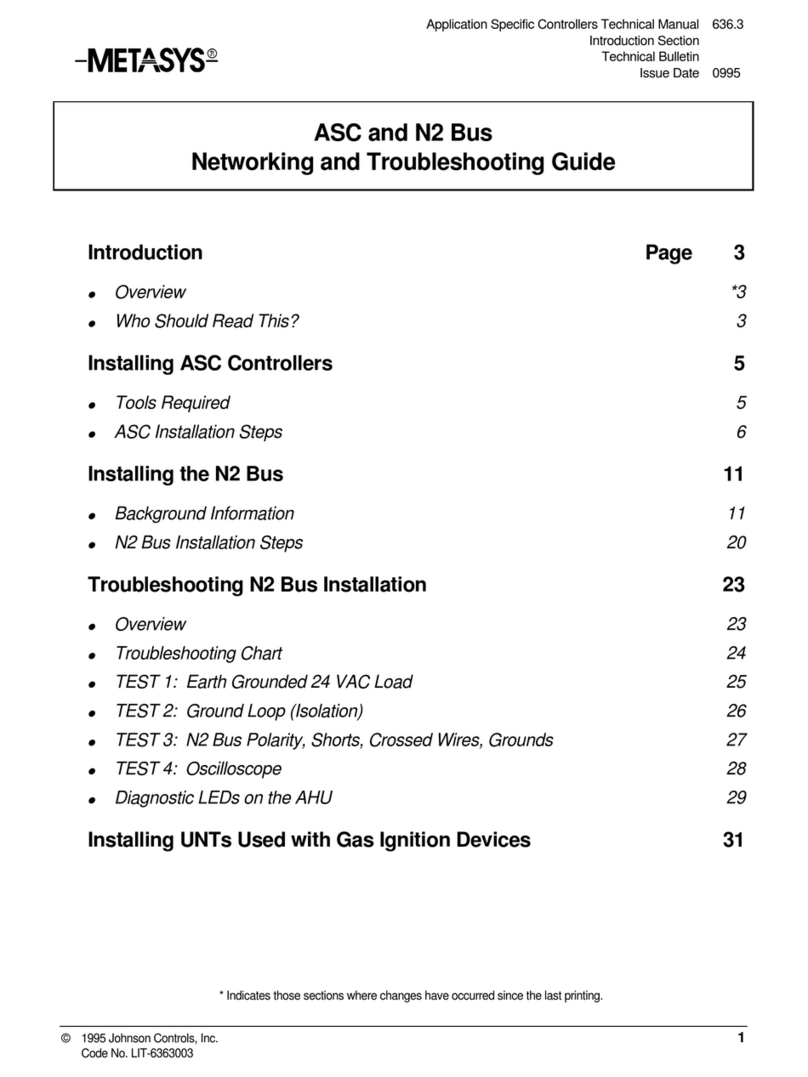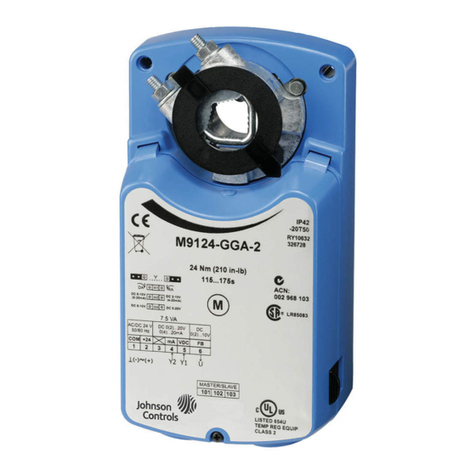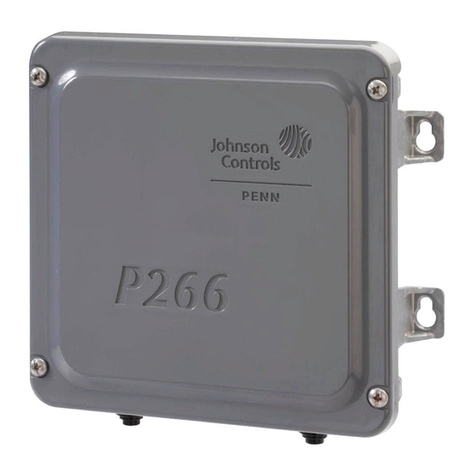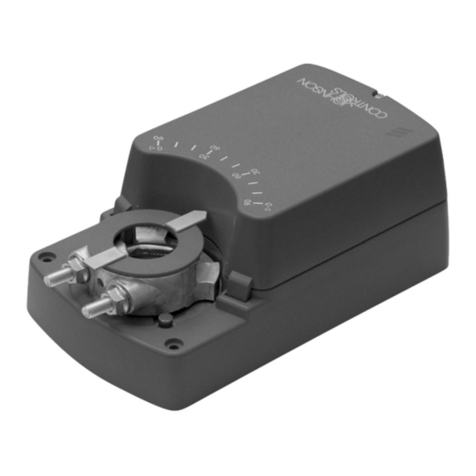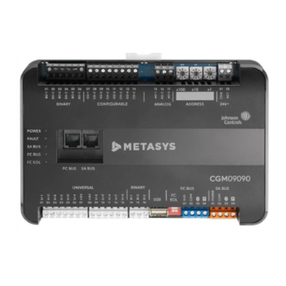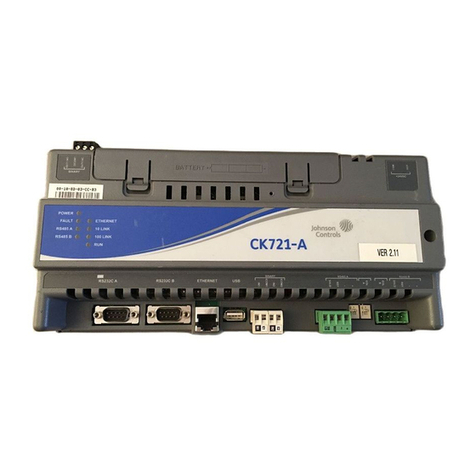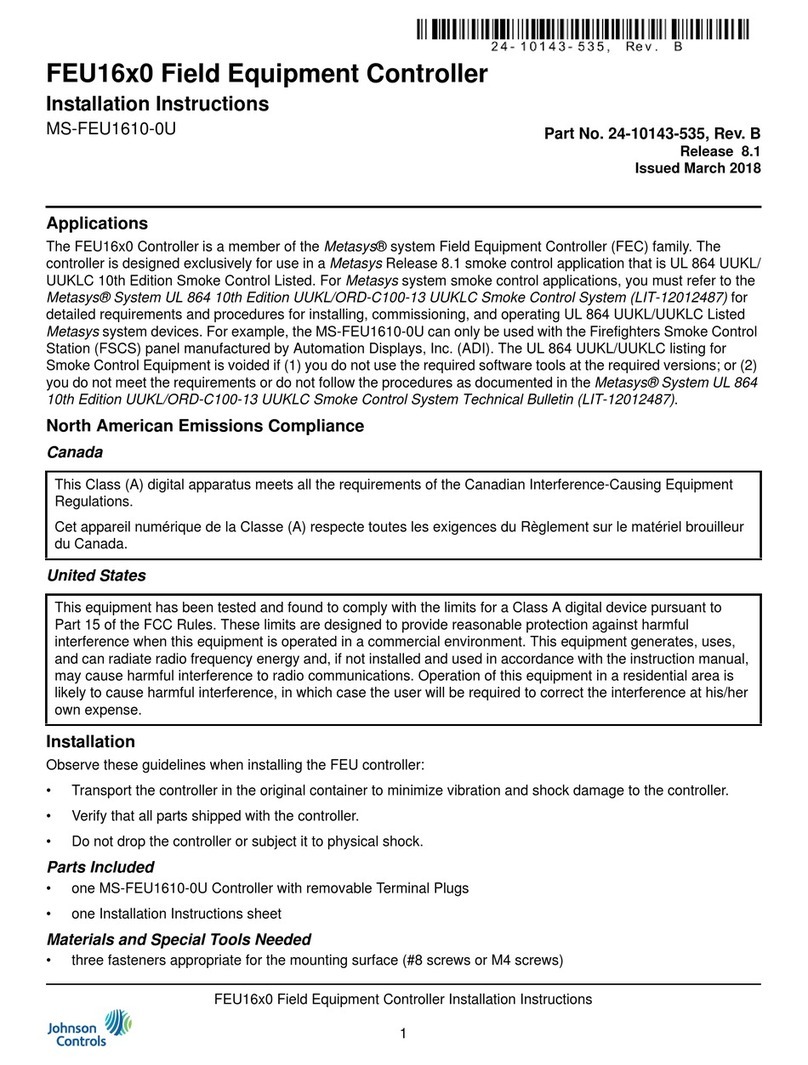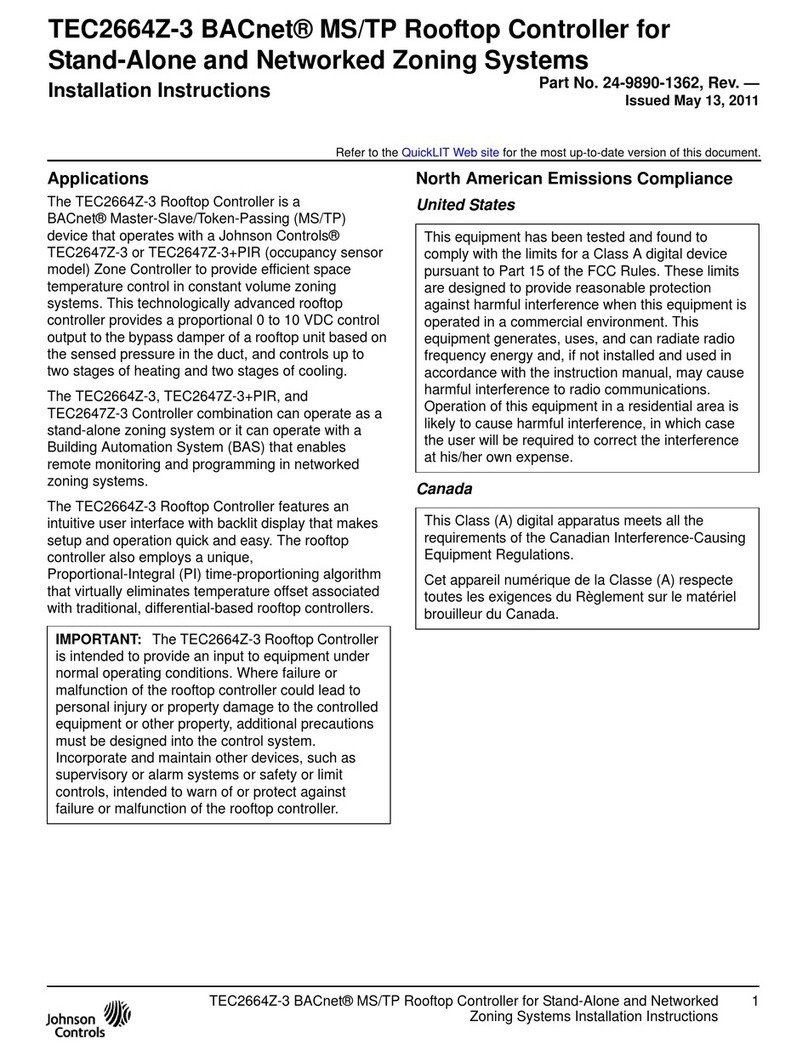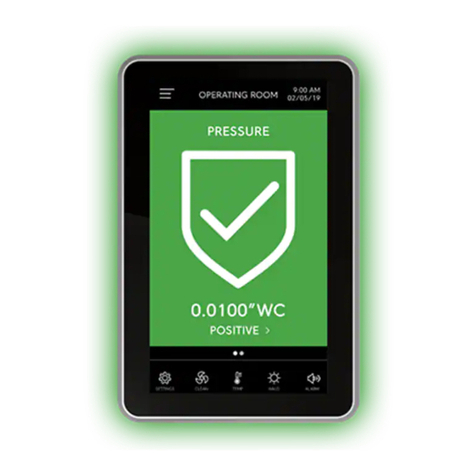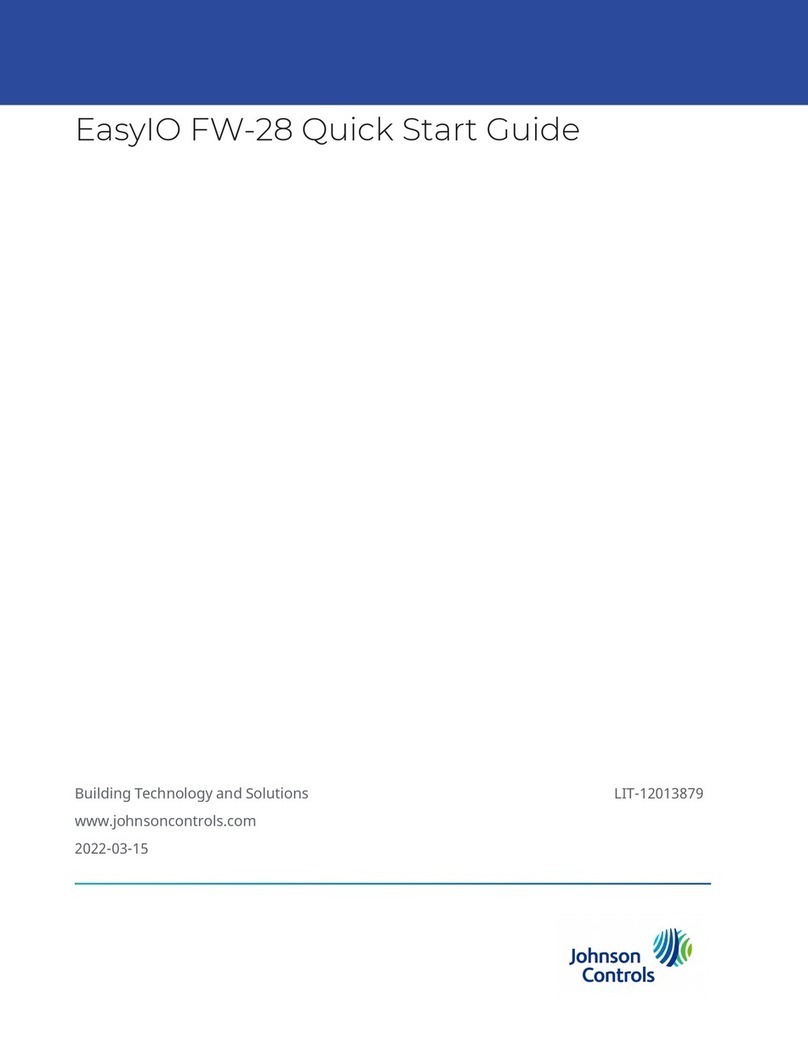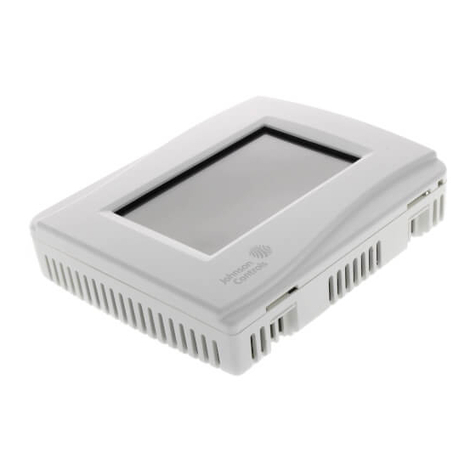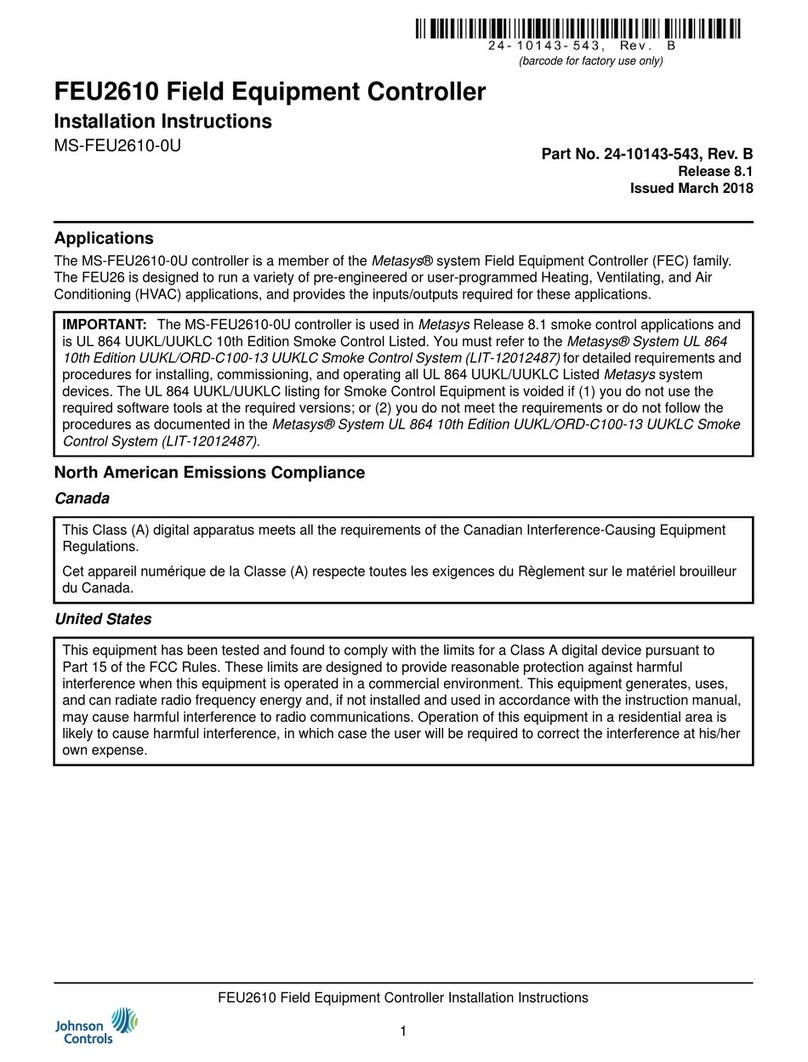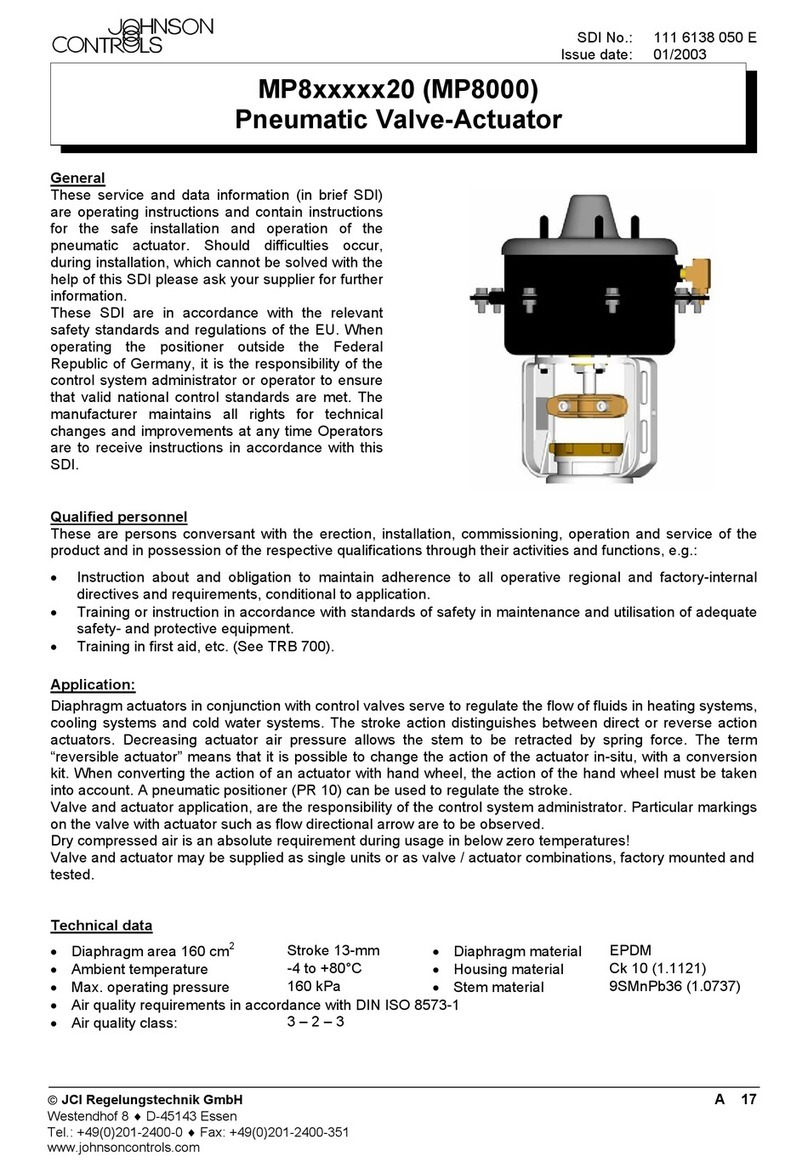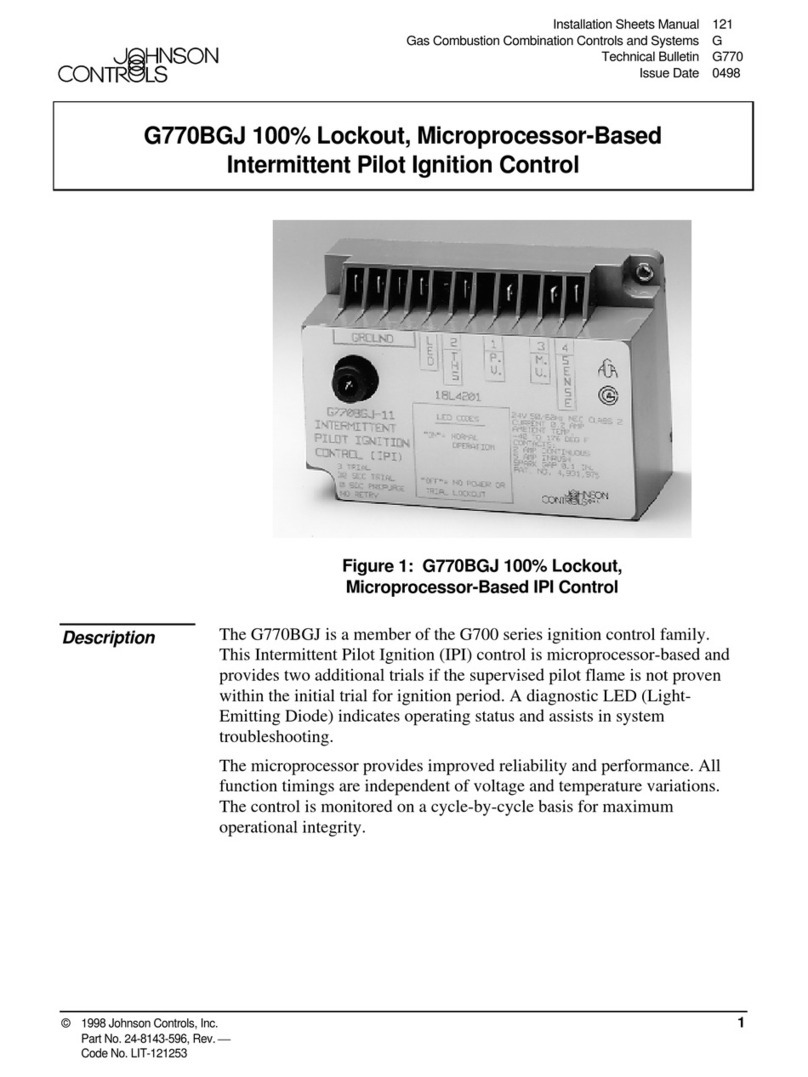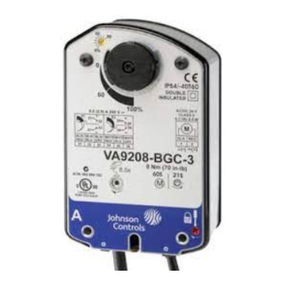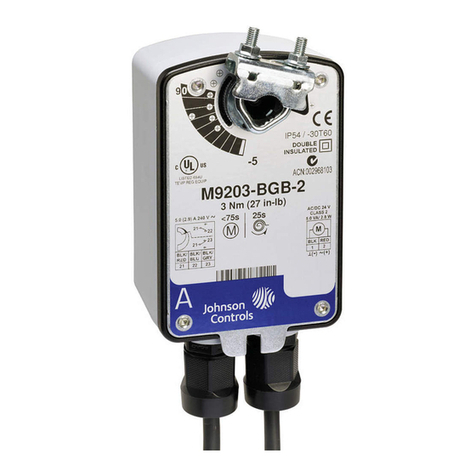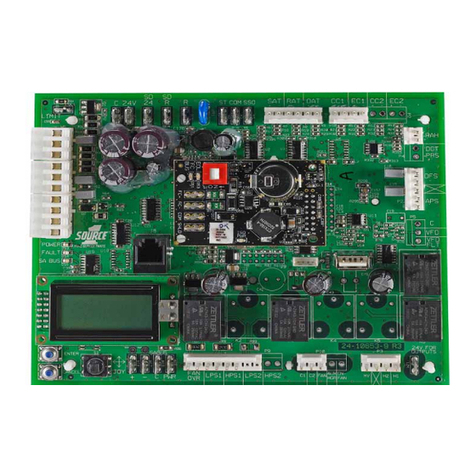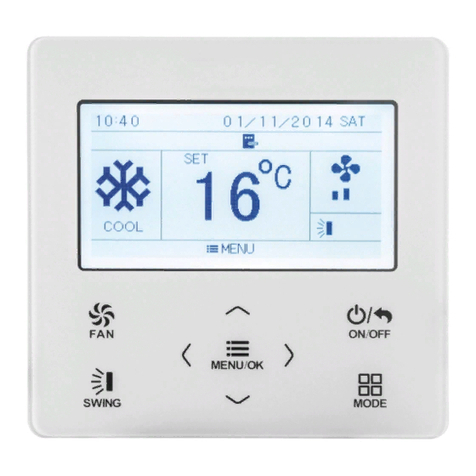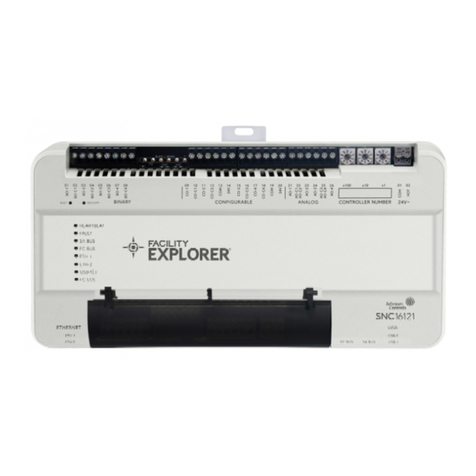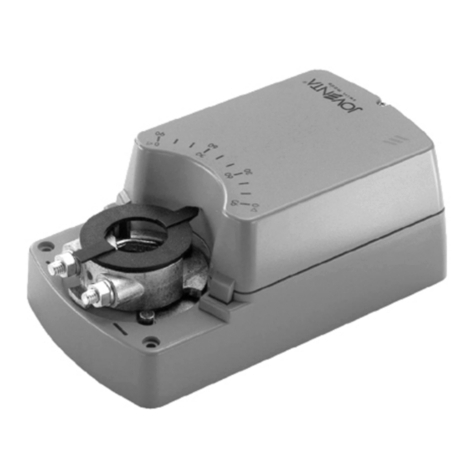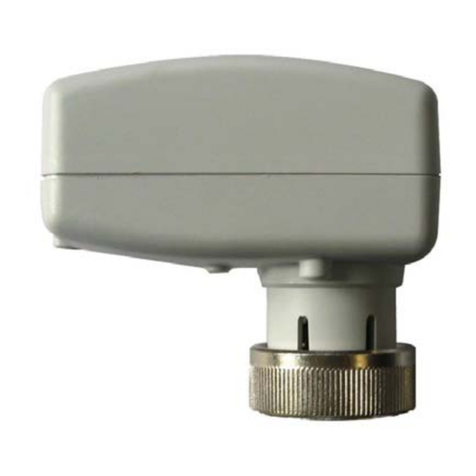
4VA-8052 Technical Bulletin
5. Obtain a source of 24 VAC
power and wire to the AC
and COM terminals. Wire a
source of 0 to 10 VDC to
the IN and COM terminals
(see Fig. 4). Check to see
that the stroke potentiometer is
fully CCW (see Fig. 1).
6. Thread the knurled coupler
onto the valve stem until
approximately 1/8 in. of
thread remains between the
knurled coupler and the
Palnut. Note: It may be
necessary to pull the valve
stem up to meet the coupler
or to apply 0 to 10 VDC to
position the coupler above the
valve stem.
7. Secure the actuator in place
by tightening the spring
plate with a large
screwdriver (see Fig. 2).
8. Stroke the actuator to the
stem-down position by
applying 10 VDC. Unthread
the knurled coupler CCW
on the valve stem until the
knurled coupler fits snugly.
9. Decrease the signal slightly
(to 6 to 7 VDC) so that
compression on the coupler
is relieved. When the lever
stops moving, unthread the
knurled coupler another 2 to
3 turns.
10. Increase the signal to
10 VDC to stroke the
actuator to the stem-down
position. The limit switch
should click at the full stem-
down position. If the switch
does not click, repeat
step 9.
11. With the valve driven fully
down, thread the Palnut up
the stem until it contacts the
coupler. Tighten the Palnut
with a 7/16 in. wrench while
holding the nut on top of the
coupler with a 1/2 in.
wrench.
12. Drive the actuator fully up
and down at least three
complete cycles, checking
to see that the lower limit
switch clicks. Note: The
lever plate must not contact
the upper stop and the drive
coupler must not contact
the bottom surface of the
actuator yoke (see Fig. 1).
Retrofit
To remove the V-3000 actuator,
upper spring plate, and spring,
refer to Fig. 3 and proceed as
follows:
1. Disconnect the air line to
the actuator.
2. Remove the actuator by
loosening the actuator set
screw on the bottom of the
lower diaphragm case. Lift
the actuator off of the valve.
3. Hold the stem extension
firmly with a 9/16 in. box-
head wrench and, with a
small screw driver, loosen
the stem locking screw.
4. For V-3000 Series Valves,
compress the spring using
the JC 5389 Spring
Compression Tool. For
V-3800 Series Valves,
compress the spring with
hand pressure.
5. Using a 9/16 in. box-head
wrench, unscrew the stem
extension. Lift the spring
and upper spring plate off of
the valve. Remove the spring
compression tool if used.
6. Thread the lower spring
plate up the centerpiece
stuffing box to increase
spacing between the spring
plate and the valve center-
piece mounting surface.
Calibration
Calibration for 1/4 to 1/2 in.
Stroke Valves
The stroke, zero, and span
settings are factory calibrated to
accept a 0 to 10 volt signal from
a controller. To change the
factory settings, proceed as
follows:
Stroke Adjustment ( See Fig. 1)
1. Adjust the stroke
potentiometer fully CCW to
maximum. Adjust the span
potentiometer fully CCW to
minimum. Adjust the zero
potentiometer fully CW to
minimum.
2. Provide an input signal of
10 VDC to the actuator.
After the actuator strokes
completely to the stem-
down position, slowly adjust
the stroke potentiometer
CW until the stem just
begins to move up. Then
adjust the stroke
potentiometer CCW until
the stem strokes down and
the limit switch clicks. Turn
the stroke adjustment an
additional 1/8 rotation CCW
to assure positive full
stroke.
Zero Adjustment
3. Adjust the zero
potentiometer fully CCW to
maximum.
4. Provide an input signal
equal to the desired zero
(starting point) value and
then wait for the actuator to
stroke to the stem-up
position and the limit switch
clicks.
5. Slowly adjust the zero
potentiometer CW until the
actuator just begins to
stroke.
Span Adjustment
6. Adjust the span
potentiometer fully CW to
maximum.
7. Provide an input signal
equal to the desired full
stroke voltage. (This value
must be at least 2.5 VDC
greater than the zero value.)
8. Slowly adjust the span
potentiometer CCW until
the actuator is fully stroked
to the stem-down position
and the limit switch clicks.
Calibration for 3/4 in. Stroke,
2-Way PDO Valves
The stroke, zero, and span
settings are factory calibrated to
accept a 0 to 10 volt signal from
